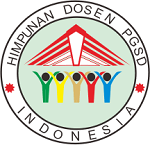PENINGKATAN HASIL BELAJAR PRAKTEK MENGGUNAKAN METODE PEMBELAJARAN PROBLEM POSING MATA PELAJARAN TEKNIK INSTALASI TENAGA LISTRIK KELAS XI TITL SMK SWASTA MUHAMMADIYAH I PEKANBARU
DOI:
https://doi.org/10.24114/jgk.v5i3.25511Abstract
Abstract: Improving practical learning outcomes using the Problem Posing learning method for Electrical Power Installation Engineering class XI TITL SMK Muhammadiyah I Pekanbaru. This study aims to improve students' practical learning outcomes in the application of single-phase electrical installations, here it is required to apply teaching aids through the application of the posing problem learning model in class XI Electrical Power Installation Engineering at Private SMK Muhammadiyah Pekanbaru August to September 2018. The subjects of this study were students of class XI Electrical Power Installation Engineering at SMK Muhammadiyah I Pekanbaru, totaling 25 people, consisting of 25 men. The data in this study were collected using learning outcomes tests which were scored based on indicators. learn the practice of single-phase electrical installation. The completeness of student learning outcomes is by comparing the basic scores with the Daily Test I and Daily Deuteronomy II on the material for applying single-phase electrical installations. After conducting research with two cycles, the application of the posing problem learning model can improve learning outcomes of single-phase electrical installation practices where at the end of the first cycle of action there are 25 students who complete or 78% with an average student learning outcome or student understanding of 65.25 increased in the second daily test with a total of 24 students or 83.25% with the average student learning outcomes or concept understanding increased to 81.45 at the end of the second cycle of action. the practice of single-phase electrical installation using teaching aids for class XI students of electrical power installation techniques at the Muhammadiyah I Pekanbaru Private Vocational School on the material of applying single-phase electrical installations.Keywords: learning outcomes, practice, posing problems, electrical installationAbstrak: Peningkatan hasil belajar praktek menggunakan metode pembelajaran Problem Posing mata pelajaran Teknik Instalasi Tenaga Listrik kelas XI TITL SMK Swasta Muhammadiyah I Pekanbaru. Penelitian ini bertujuan untuk meningkatkan hasil belajar praktek siswa pada penerapan instalasi listrik satu fasa, disini dituntut penerapan alat peraga melalui penerapan model pembelajaran posing problem di kelas XI Teknik Instalasi Tenaga Listrik SMK Swasta Muhammadiyah Pekanbaru..Penelitian ini merupakan penelitian tindakan kelas yang dilaksanakan pada bulan agustus sampai dengan bulan september 2018.Subjek penelitian ini adalah siswa kelas XI Teknik Instalasi Tenaga listrik SMK Swasta Muhammadiyah I Pekanbaru yang berjumlah 25 orang, terdiri atas 25 laki-laki.Data dalam penelitian ini dikumpulkan dengan menggunakan tes hasil belajar yang di nilai berdasarkan indikator belajar praktek instalasi listrik satu fasa. Adapun ketuntasan hasil belajar siswa yaitu dengan membandingkan skor dasar dengan Ulangan Harian I dan Ulangan Harian II pada materi penerapan instalai listrik satu fasa. Setelah diadakan penelitian dengan dua siklus, penerapan model pembelajaran posing problem dapat meningkatkan hasil belajar praktek instalasi listrik satu fasa dimana pada akhir tindakan siklus I terdapat 25 siswa yang tuntas atau 78 % dengan rata-rata hasil belajar siswa atau pemahaman siswa 65,25, kemudian meningkat pada ulangan harian II dengan jumlah yang tuntas 24 siswa atau 83,25% dengan rata-rata hasil belajar siswa atau pemahaman konsep meningkat menjadi 81,45 pada akhir tindakan siklus II.Dari hasil penelitian dapat disimpulkan bahwa penerapan pembelajaran posing problem dapat meningkatkan pemahaman praktek instalasi listrik satu fasa dengan menggunakan alat peraga siswa kelas XI teknik instalasi tenaga listrik SMK Swasta Muhammadiyah I Pekanbaru pada materi penerapan instalasi listrik satu fasa.Kata kunci: hasil beajar, praktek, posing problrm, instalasi listrikReferences
A.M, Sadiman, Interaksi dan Motivasi Belajar Mengajar, Jakarta: PT. Raja Grafindo Persada, 2001.
Abdurrahman, Mulyono, Pendidikan bagi anak berkesulitan belajar, Jakarta: Rineka Cipta, 1999.
Ali, M., Penelitian Kependidikan Prosedur dan strategi, Bandung: Angkasa, 1998.
Arief, Armai, Pengantar Ilmu Metodologi Pendidikan islam, Jakarta, Ciputat Pers, 2002.
Arikunto, Suharsimi, Prosedur Penelitian: Suatu Pendekatan Praktek, Jakarta: Rineka Cipta, 1997.
,dkk, Penelitian tindakan kelas, Jakarta: Bumi aksara, 2006.,cet V.
Binadja, Achmad, SETS Education for the SecondaryLevel, Regular course, 04 Oktober-13 November, 1999.
Hakekat dan Tujuan Pendidikan SETS dalam Konteks kehidupan dan Pendidikan Yang Ada. Makalah ini disajikan dalam seminar Lokakarya Pendidikan SETS, kerja sama antara SEAMEO RESCAM dan UNNES, 14-15 Desember 1999.
Budimansyah, Dasim, Model Pembelajaran Berbasis Port ofolio Biologi, Bandung: Genesindo,2003., .1
Depdikbud, Kamus Bahasa Indonesia, Jakarta: Balai pustaka, 2005.
Depdiknas, Kurikullum 2004 Standar Kompetensi Mata Pelajaran Biologi SMA dan MA, Jakarta:Depdiknas,2003.
Djamarah, Syaiful Bahri dan Aswan Zain, Strategi Belajar Mengajar, Jakarta: PT. Rineka Cipta, 2006., cet. 3.
, Prestasi belajar dan kompetensi guru, Jakarta:Rineka Cipta, 1994.
Hadi, Amirul dan Haryano, Metodologi Penelitian Pendidikan, Bandung: Pustaka Setia, 1998.
Hajar, Ibnu, Dasar-dasar Metode Penelitian Kuantitatif Dalam Pendidikan, Jakarta: Raja Grafindo Persada, 1998.
Hamalik, Oemar, Kurikulum dan Pembelajaran, Jakarta: Bumi Aksara, 2008.
, Proses Belajar Mengajar Jakarta: PT. Bumi Aksara, 2007. Koentjaraningrat, Metode Penelitian Masyarakat,Jakarta: Gramedia, 1991.
M.U, Usman,. Menjadi guru Profesional, Bandung: PT. Remaja Rosdakarya, 2000.
Downloads
Published
How to Cite
Issue
Section
License
Authors published with the JGK (Jurnal Guru Kita) agree to the following terms:
- Authors retain copyright and grant the journal the right of first publication with the work simultaneously licensed under a Creative Commons Attribution License (CC BY-SA 4.0) that allows others to share the work with an acknowledgment of the work's authorship and initial publication in this journal.
- Authors are able to enter into separate, additional contractual arrangements for the non-exclusive distribution of the journal's published version of the work (e.g., post it to an institutional repository or publish it in a book), with an acknowledgment of its initial publication in this journal.
- Authors are permitted and encouraged to post their work online (e.g., in institutional repositories or on their website) prior to and during the submission process, as it can lead to productive exchanges, as well as earlier and greater citation of published work. (See The Effect of Open Access)




























